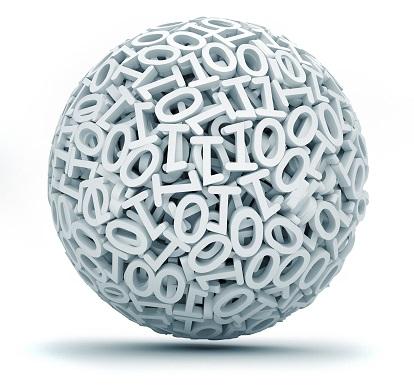Gartner's CIO Symposium Welcome Keynote advised CIOs that we're entering the age of the algorithm.


6 Ways To Ask Smarter Questions Of Big Data
6 Ways To Ask Smarter Questions Of Big Data (Click image for larger view and slideshow.)
With a cheerful "Game On," Gartner CEO Gene Hall welcomed those who were attending Gartner CIO Symposium, as well as the Age of the Algorithm.
Digitalization is ushering in new demands on CIOs. Digitalization, Gartner claims, is already providing $1 trillion to the global economy and growing. Behind all of this new economy isn't data, but algorithms.
And if you're still thinking about data, you're behind the curve.
Senior vice president of Gartner Research Peter Sondergaard hyped algorithmic business like this: "Algorithmic business is already here. Can you calculate the value of relationships with three billion people using smartphones? Can you calculate the value of access with 30 billion things? Can you calculate the value of trust in your relationships?"
But once you get through the hype, he said something that really should scare CIOs and change the way they think.
"If the most important thing you offer is data," Sondergaard said, "you are in trouble. Big data is not where the value is. Data is certainly necessary, but it is transient. By itself it is not transformative. The organization can view you as the data keeper, but anyone can store data. Anyone can hire someone to store data and even analyze it. Data is inherently dumb. It doesn't do anything unless you know how to use it and act with it. Algorithm is where the real value lies. Algorithms define action."
Recognizing Algorithms
While a lot of CIOs can say they are in charge of the enterprise's data, fewer can say they have a handle on its algorithms. Most don't even view their business that way. They're still thinking in terms of storing and providing data, and if they're lucky (or advanced), in providing apps to customers using that data.
However, because of cloud and digital assistants, consumers and end-users are turning away from apps toward algorithms without even necessarily knowing it, Sondergaard said.
"By 2020," Sondergaard said, "smart agents will facilitate 40% of interactions. Consumers will forget apps. The post app era is coming. By 2020, Microsoft's strategy will be centered on Cortana instead of Windows."
The algorithm business, at least according to Gartner, is fundamentally different. It is a business where giving away your product makes sense. Frank Buytendijk, Gartner vice president and distinguished fellow, gave us a framework for the new algorithm economy: "Give. Take. Multiply."
The algorithm economy is about the "density of contact" with "your business at the center of a network." Whether you are talking a web of customers or a Web of millions of devices or "things," your business is a network of algorithms interacting together. When possible you want to "give" these algorithms away.
"It is the business reality of the 21st century," Buytendijk said, "Tesla has shared its patents on superchargers, because Tesla believes if others invest, we all benefit. Tesla is not altruistic. If others invest, superchargers improve. Tesla also benefits if people adopt their standard. And now Ford and Toyota have followed suit and opened up many of their patents."

Gartner VP and distinguished analyst Frank Buytendijk speaking at the opening keynote of the Gartner CIO symposium.
Buytendijk stressed he isn't asking people to release everything. If your company, for example, hinges on the secret recipe of your product (like Coke), you don't throw it out there. "But every organization has some information or capabilities that are worth sharing rather than keeping to themselves," said Buytendijk.
Of course, if everyone is giving, you can also take what is available in the marketplace of algorithms. There are so many sources of information. Buytendijk gave the example of quantified-self data: "I have so many sensors on me and around me, I am worried the only thing that is not smart around me is actually me. What sensors are out there already you can tap into and show their value?"
It is this give-and-take where the magic happens, according to Gartner.
"Once you can give and take, the power scales exponentially," said Buytendijk, "The value of things [is] only multiplied if they interact. The goal is to create a tightly woven fabric, a mesh of connections. This is when they have the factorial effect. Every connection has the potential to create value."
Powering the Future
It is this magic of giving and taking algorithms that will power the future economy. "The algorithmic economy will power the Internet of Things, "said Sondergaard, "Products will be defined by the power of their algorithms. In a few decades we will not believe we allowed a 16-year-old to control a 4,000 lb. vehicle hurtling down a highway at 60 miles per hour."
[Of course, not everyone is happy about the age of algorithms. Read A Day Without Algorithms.]
The argument that algorithms are vital to the Internet of Things and to using data in the future is fairly clear. If you believe in the magic of network effects, you can probably see the value of sharing them. But where does the CIO come in?
The CIO needs to become the keeper of the algorithm. According to Sondergaard you can start with three easy steps:
Inventory your algorithms. This isn't just about software. Anything in the business can be an algorithm from the secret recipe for your product, a business process you do especially well, or a true algorithm around parsing data. The important part is that you are aware of the algorithms that make your business work and are unique to you.
Assign ownership to algorithms. Decide who owns and operates each of these algorithms vital to your business. Sondergaard recommends your CDO be put in charge of not only your data, but also your algorithms.
Classify your algorithms. Decide which to give and which to hold private. Sondergaard expects that, "A market for algorithms will emerge. Or more accurately, a market for snippets of software that so a specific thing." Buytendijk added, "By 2018, one out of three businesses will be monetizing their information assets." In other words, the data you have is useless, but if you have a skillset for making use of data, the skillset itself has value above and beyond the data you collect.
Of course, as usual, this means a changing nature in the role of the CIO, but you're used to that by now. What it means, more than anything, is a change in the way you think of data. Data is not your goal. Even making it useful to the enterprise isn't your goal. The algorithms you use to make use of the data and the competency around those algorithms will be what you use to transform the business.
About the Author(s)
You May Also Like







